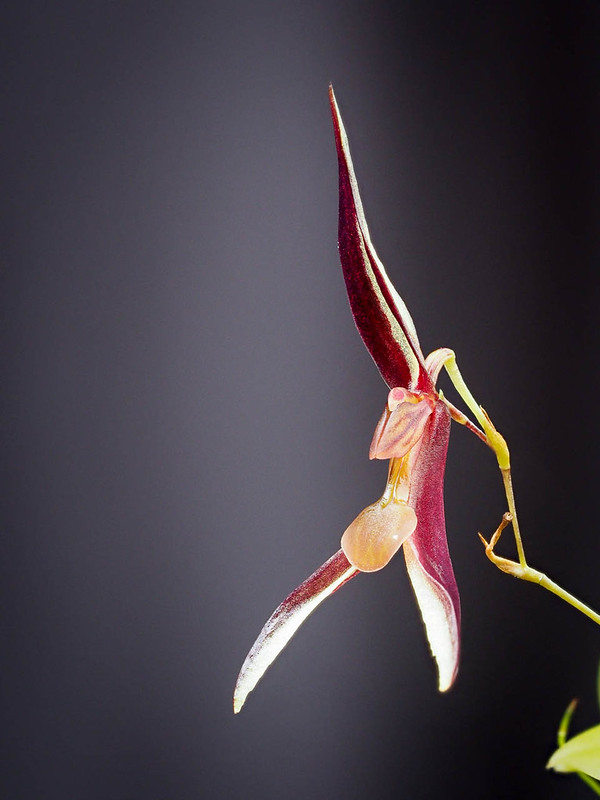
Stelis mystax is endemic to a small area of central Panama (around Santa Fe in the province of Veraguas) from altitude 650-750m, but locally abundant (Luer 2007, p. 97-98). The species epithet, mystax, means a mustache in Latin (originally derived from ancient Greek) because the lateral sepals look like one.
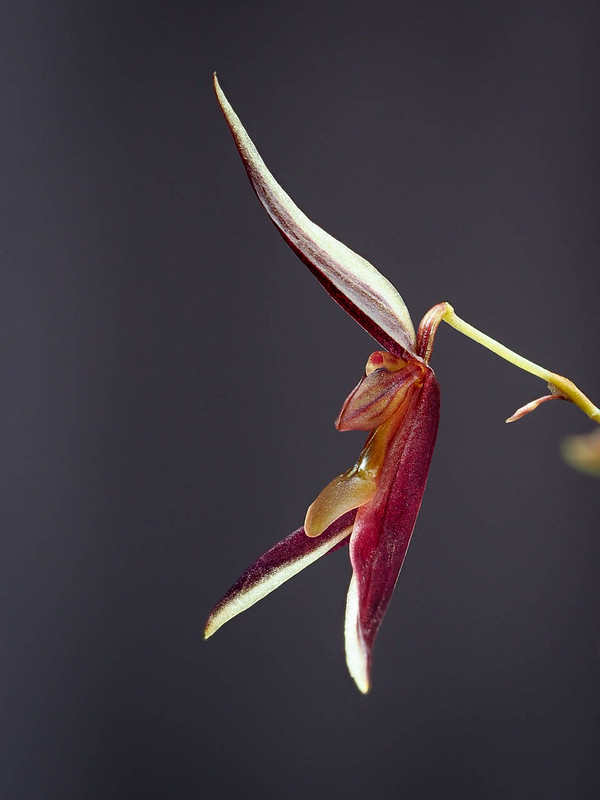
Stelis mystax was originally described under genus Pleurothallis by C.A. Luer, but it was moved to a monotypic genus, Mystacorchis, in 2001. Molecular phylogeny, based on nuclear ITS and chloroplast matK, shows that Stelis mystax is clustered with Dracontia (= previous Pleurothallis section Dracontia) species used for the study, which include Stelis alta, S. carnosilabia, S. cobanensis, S. dracontea, S. gigantea, S. megachlamys, S. papillifera, Dracontia hydra, and D. lueriana, and two other unique species, S. carpinterae and S. convallaria (Karremans et al. 2013). Although the support isn't particularly strong, it appears to be closest to the later two unique species, S. carpinterae and S. convallaria. Karremans (2015) considers that although Dracontia is a good monophyletic grouping, in order to recognize this genus, we need to establish several genera to maintain monophyletic Stelis. Currently, there aren't sufficient data to revise the entire clade of Stelis relatives, so he chose to keep the broad sense Stelis (which includes Dracontia). But the future revision might separate out this clade, which may or may not include S. mystax and two other unique Stelis.
I've been growing it at the cool end of intermediate; min/max of 18/29C (65/85F) in the summer and 13/21C (55/70F) in the winter, but it might be happier with the warmer temp. I got mine from Seattle Orchids in their scratch-and-dent sale.
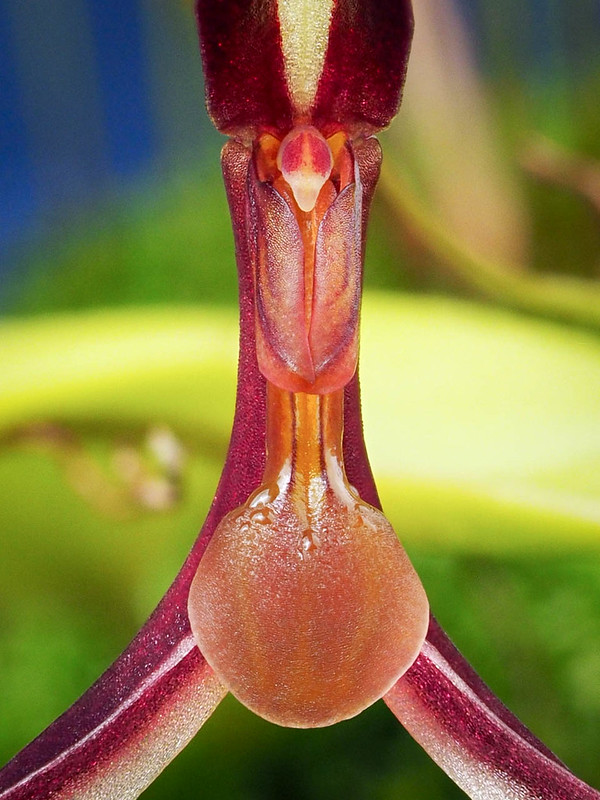
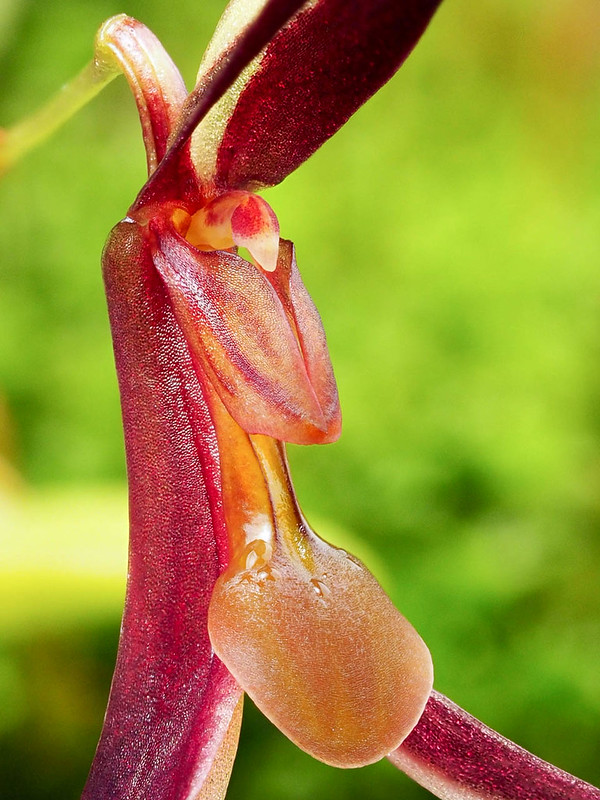 |
| It is interesting that the petals make a tubular structure under the column. It is probably contributing to the pollination success by directing the pollinators. |
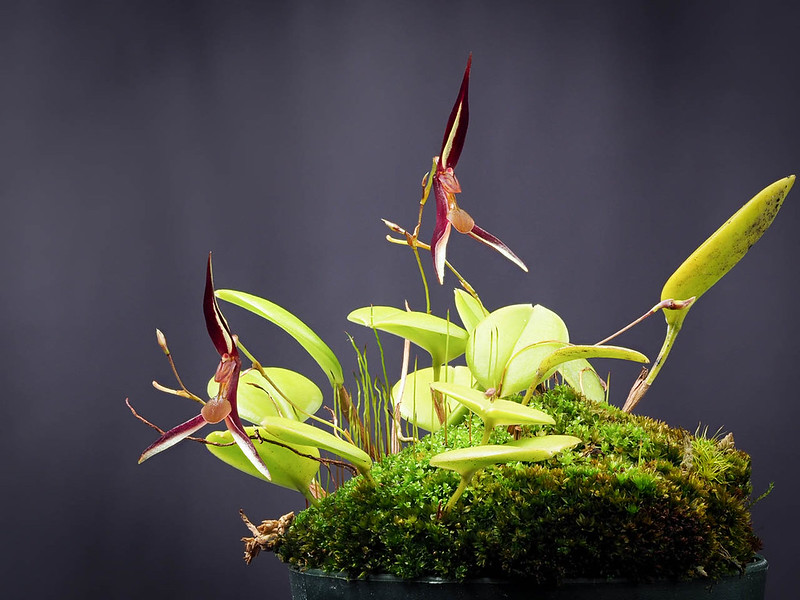
This is how it looked like when I got it in September, 2016. It was a fairly small plant, but it grew moderately well in one year.
 |
| September 2016. |
Literature Cited:
- Karremans, A.P., Bakker, F.T., Pupulin, F., Solano-Gómez, R. and Smulders, M.J., 2013. Phylogenetics of Stelis and closely related genera (Orchidaceae: Pleurothallidinae). Plant Systematics and Evolution, 299(1): 151-176.
- Karremans, A., 2015. Nomenclatural notes in the Pleurothallidinae (Orchidaceae): Stelis. Phytotaxa, 203(3): 292-296.
- Luer, C. A. 2007. Icones Pleurothallidinarum XXIX. A Third Century of Stelis of Ecuador, Systematics of Apoda-Prorepentia, Systematics of Miscellaneous Small Genera, Addenda: New Genera, Species and Combinations (Orchidaceae). Missouri Botanical Garden Press, St. Louis, MO, USA
What is your care routine like? Mine looks so puny!
ReplyDeleteUnfortunately, it died last year, I think. But I water twice a week with 30ppmN fertilizer. In the winter, I probably water less frequently. It is under moderate amount of light; maybe a bit more than Phalaenopsis level.
Delete